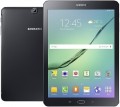CPU
The model name of the processor installed in the tablet.
The processor is the “heart” of the device. It is he who is responsible for performing all the computing operations necessary for the normal operation of the tablet, and largely determines the overall performance. Knowing the name of a specific processor model, you can easily find detailed information on it, incl. and comparison with other models.
The most popular chips these days are from
Qualcomm(in particular, the top solutions
Snapdragon 800 series and
Snapdragon 8 series),
MediaTek(budget and “mid-range”
MediaTek Helio processors and the line of advanced
MediaTek Dimensity chipsets with 5G support), and among Windows tablets
Intel processors (mainly the
Intel Core family) are often found. Quite a rarity are branded
Kirin processors from Huawei and Honor.
CPU speed
The clock speed of the processor installed in the tablet is actually the maximum number of operations performed by one processor core per second. This indicator is important for the speed of the system, but a high clock frequency in itself does not guarantee speed. The actual speed of the processor also depends on its architecture, the number of cores and many other features, and the overall speed of the device also depends on the amount of “RAM”, the installed OS, etc. Therefore, situations are not uncommon when
powerful advanced tablets have a lower CPU frequency than more modest models.
Graphics card
Model of the graphics card installed in the tablet. The graphics card in such devices is not a separate device, but part of the processor; however, she still has a clear specialization and is responsible for graphics.
Accordingly, the graphics capabilities of the tablet directly depend on the characteristics of the video accelerator. Theoretically, knowing the name, you can find detailed specifications of a graphics card, reviews, test results and other information and evaluate how it suits you. At the same time, in most cases there is no need to delve into such details — all system components, including the graphics card, are usually selected in such a way as to correspond to the general class of the tablet and the capabilities necessary for this class.
AnTuTu Benchmark
The result shown by a device when undergoing a performance test (benchmark) in the AnTuTu Benchmark.
AnTuTu Benchmark is a comprehensive test designed specifically for mobile devices, primarily smartphones and tablets. It evaluates the performance of the processor, memory, graphics, and input/output systems, providing a clear impression of the system's capabilities. The better the performance, the higher the score. According to AnTuTu, top models are those that score more than 700K points.
As with any benchmark, this test does not provide absolute precision; for more details on measurement inaccuracies, see the "3DMark Gamer's Benchmark" section.
Geekbench
The result shown by the device when passing the performance test (benchmark) Geekbench.
Geekbench is a specialized benchmark designed for CPUs. Since version 4.0, the test has also been applied to graphics accelerators; towards the end of 2019, the benchmark was released under the number "5". The characteristics of portable gadgets usually provide data specifically for the CPU. During testing, Geekbench simulates the workloads that occur when performing real-world tasks, and takes into account both the capabilities of a single core and the efficiency of multiple cores running simultaneously. Thanks to this, the final results characterize well the capabilities of the processor in everyday use. In addition, the test is cross-platform and allows you to compare the CPUs of different devices (smartphones, tablets, laptops, PCs). The help information only lists the multi-core test values for CPU.
More features
-
FM receiver. A feature that allows you to listen to FM radio on your tablet. It should be borne in mind that for reliable reception, you may need to connect wired headphones (usually via a
3.5 mm mini-Jack connector) - their cable in this case will play the role of an antenna.
-
Fingerprint scanner. Fingerprint sensor. Used to recognize the user in appropriate situations: when unlocking the tablet, when authorizing in different accounts, when confirming payments, etc. It can be located in different places on the tablet - in front, behind, on the side, on the screen. This authentication method is much more convenient and safer than passwords: they can be forgotten or accidentally opened to strangers, while the finger is not lost, and it is very difficult to fake a fingerprint.
-
3D face scanner. A special technology for recognizing the user's face - not just by photographing, but by building a three-dimensional model of the face based on data from a special module on the front panel. This technology is constantly being improved, in our time it is able to take into account the change in hairstyles and facial hair, the presence of glasses, makeup, etc. At the same time, the recognition of twins and children's faces still remains weak points (they have fewer individual features than adults ). The main use of a face scanner is
...authentication when unlocking a tablet, entering applications, making payments, etc. At the same time, other, more original use cases are possible. For example, in some applications, the face scanner reads the user's facial expressions, and then this facial expression is repeated by a smiley on the screen.
- Gyroscope. A device that tracks the rotation of the tablet in space. Modern gyroscopes work on all three axes and are able to determine both the speed and the angle of deviation. This expands the control of the tablet, allowing you to give commands by tilting the device in one direction or another; This feature is especially popular in games.
